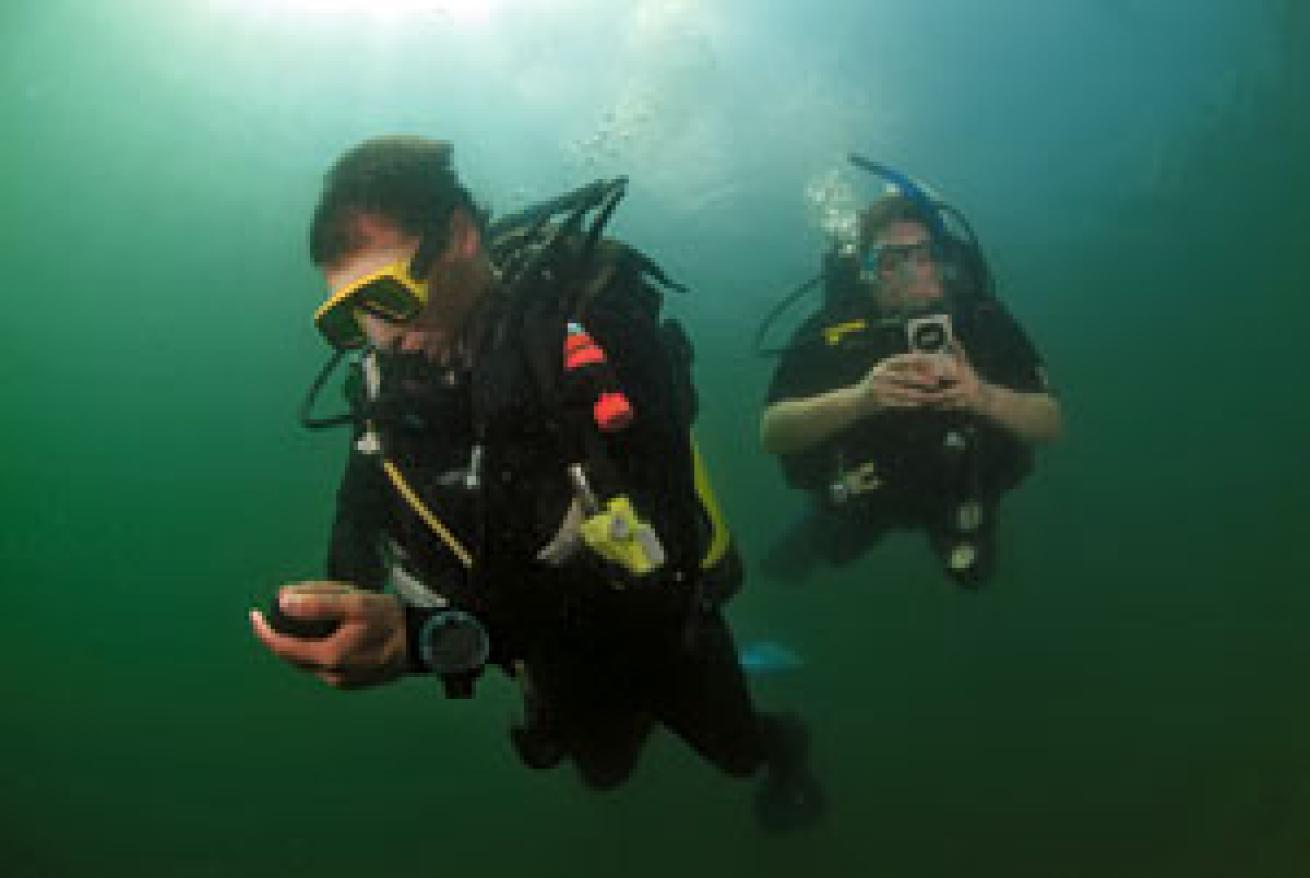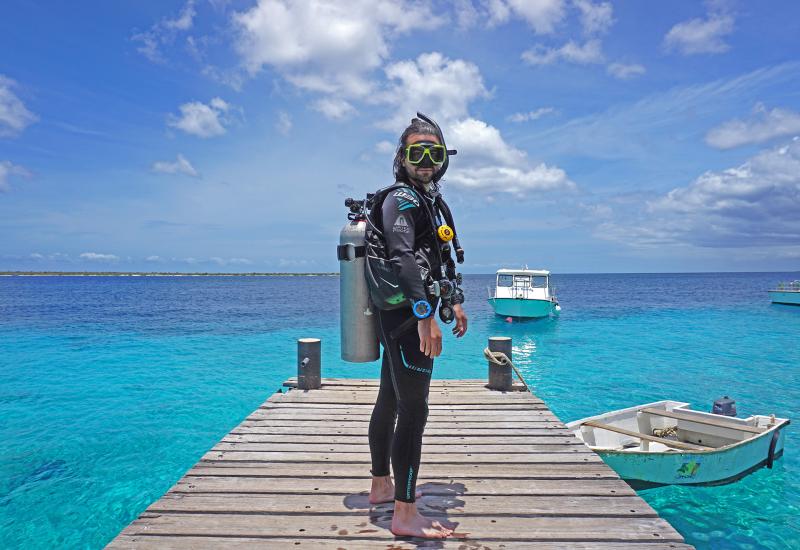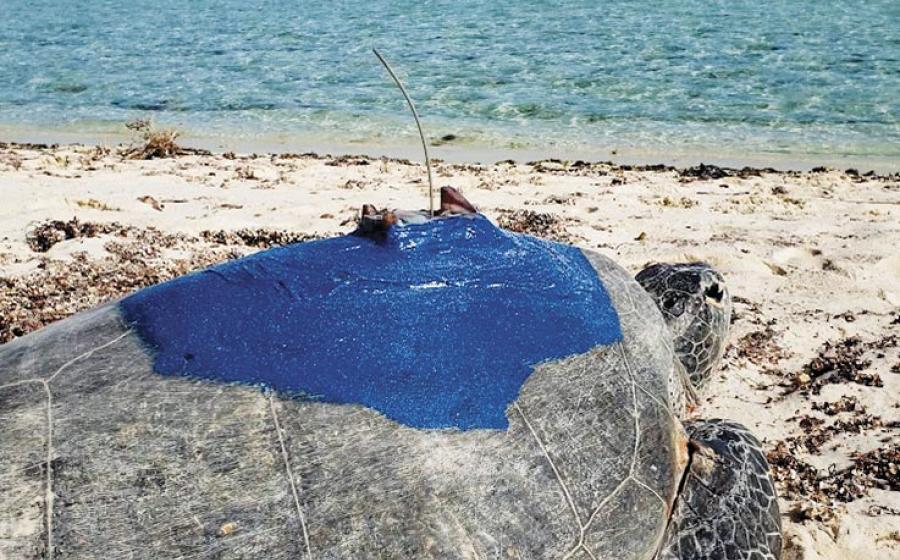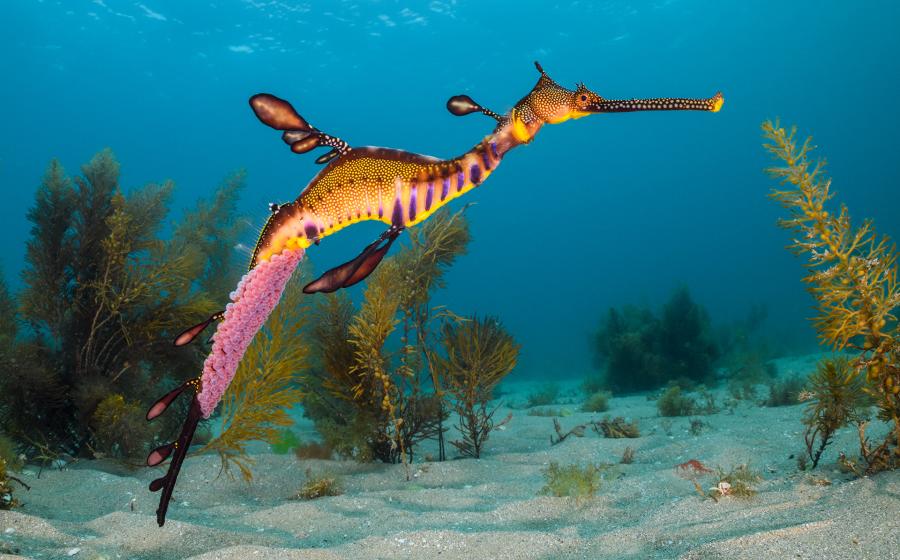Ask an Instructor - December 2008

By Michael Ange
Photo by Amar Guillen
Q: My buddy and I dive together often, and we're both pretty good at compass navigation. I have noticed on recent dives that our compasses give substantially different numerical readings when we're trying to plot the exact same course. However, we both seem capable of arriving at our ultimate destination. Can you explain why this happens?
A: Underneath the compass card (the part inside the compass that spins), there is a very small magnet that's always attracted north. Depending on the compass design, it is possible for this magnet to shift its position on the compass card over time, usually as the result of being dropped or some other rough impact. But regardless of the magnet's position on the card, it will always point north as long as the compass card turns freely and the magnet is still attached to it. As in the situation you've described, this will make the numerical degree headings inaccurate, but by following the inaccurate numbers, the compass will still allow you to swim simple patterns like out and back swims, squares and triangles with a fair degree of accuracy.
Q: I have cylinders dedicated for nitrox use, complete with yellow-and-green nitrox labels. Most dive shops accept my tanks, but one store in my hometown refuses to fill them unless I buy their nitrox labels, which are green bands with yellow stripes and the word "nitrox." They cite an obscure Department of Transportation (DOT) regulation, but my regular dive shop says this is bunk. Who is correct?
A: The shop's reasoning is bunk. The DOT does not recognize nitrox as a separate gas. It does have regulations for labeling both breathing air and oxygen, the two components used in making nitrox, but the diving industry uses its own labeling convention for diving cylinders. Here are the recommendations used by a majority of people in the industry: Nitrox tanks are typically identified with a green-and-yellow band, which may or may not contain stripes, but will contain text lettering of yellow on a green background spelling out the word "Nitrox" or "Enriched Air Nitrox." Your tank must also contain a label identifying the percentage of oxygen in the cylinder. Content labels can be permanent labels, temporary stickers or even written in wax pencil. This is the standard in the industry for nitrox mixtures up to 40 percent. For mixtures greater than 40 percent, white-and-green labels identify the gas as either a deco mix or pure oxygen.
Q: Sometimes I feel a little dizzy or lightheaded when I ascend from a dive, especially in the last 20 feet. What causes this? Can I avoid it and is it something I should worry about?
A: Your problem may be caused by alternobaric vertigo, a condition that happens when the pressure in one ear doesn't equal the pressure in the other. Most likely, the pressure in your middle ears is not venting at an even rate as you ascend. If the problem is intermittent, you may have issues with periodic congestion blocking the Eustachian tubes. If it happens on every dive, you may have Eustachian tubes that are partially blocked all the time. If that is the case, an ear, nose and throat specialist can determine what's causing the blockage and let you know if there is any way to correct it. In the meantime, there are several things you can do to lessen the problem. First, never dive with congestion. Second, try to pre-stretch your Eustachian tubes by repeatedly clearing your ears above water every day for several days preceding your dives. Third, always ascend very slowly, especially the last 30 feet, and as you ascend, stretch your neck from side to side. This can help open the Eustachian tubes and allow the trapped gases to escape the middle ear more easily. Finally, use a visual reference when you ascend to help minimize the effects of any dizziness you experience.
Q: After a recent dive I noticed a milky-white substance leaching out of my soft weights while I was rinsing out my rental gear. Repeated rinsing did not stop the leaching. Is this lead? Are divers who use soft weights unknowingly leaking toxins into the environment?
A: The white substance you describe is most likely lead oxide leaching from the soft weights. If that is what it is, then yes, this substance is not environmentally friendly, and these weights should be replaced when leaching becomes apparent. However, not all soft weights are created equal. Shop around to find weights that minimize this risk. High-quality manufacturers use a harder lead alloy that keeps the lead shot from breaking down and leaching into the environment, and some manufacturers coat the shot to achieve the same effect.
Q: I've recently gained some weight, and I noticed on my last dive trip that I had to add a few extra pounds of lead to stay down. Does my body fat content have any impact on the amount of weight required to dive?
A: as a general rule, added body fat does increase buoyancy, usually requiring the diver to add additional lead to his or her weight belt. Body fat consumes more space but weighs less per cubic centimeter than muscle. We use a measurement called specific gravity to evaluate the weight of an object in relationship to water. A specific gravity of 1 is neutral (neither sinks nor floats), less than 1 is positively buoyant (floats) and greater than 1 is negative (sinks). Human body fat has a specific gravity of about 0.94, and muscle tissue has a specific gravity of about 1.06. Of course, the body is a complex set of tissues, as well as spaces containing both gases and fluids, so the only way to really check buoyancy is to get in the water and evaluate your weighting.
Got a question you need answered?
E-mail it to [email protected], or write to:
Ask An Instructor
6600 Abercorn St., Suite 208,
Savannah, GA 31405

By Michael Ange
Photo by Amar Guillen
Q: My buddy and I dive together often, and we're both pretty good at compass navigation. I have noticed on recent dives that our compasses give substantially different numerical readings when we're trying to plot the exact same course. However, we both seem capable of arriving at our ultimate destination. Can you explain why this happens?
A: Underneath the compass card (the part inside the compass that spins), there is a very small magnet that's always attracted north. Depending on the compass design, it is possible for this magnet to shift its position on the compass card over time, usually as the result of being dropped or some other rough impact. But regardless of the magnet's position on the card, it will always point north as long as the compass card turns freely and the magnet is still attached to it. As in the situation you've described, this will make the numerical degree headings inaccurate, but by following the inaccurate numbers, the compass will still allow you to swim simple patterns like out and back swims, squares and triangles with a fair degree of accuracy.
Q: I have cylinders dedicated for nitrox use, complete with yellow-and-green nitrox labels. Most dive shops accept my tanks, but one store in my hometown refuses to fill them unless I buy their nitrox labels, which are green bands with yellow stripes and the word "nitrox." They cite an obscure Department of Transportation (DOT) regulation, but my regular dive shop says this is bunk. Who is correct?
A: The shop's reasoning is bunk. The DOT does not recognize nitrox as a separate gas. It does have regulations for labeling both breathing air and oxygen, the two components used in making nitrox, but the diving industry uses its own labeling convention for diving cylinders. Here are the recommendations used by a majority of people in the industry: Nitrox tanks are typically identified with a green-and-yellow band, which may or may not contain stripes, but will contain text lettering of yellow on a green background spelling out the word "Nitrox" or "Enriched Air Nitrox." Your tank must also contain a label identifying the percentage of oxygen in the cylinder. Content labels can be permanent labels, temporary stickers or even written in wax pencil. This is the standard in the industry for nitrox mixtures up to 40 percent. For mixtures greater than 40 percent, white-and-green labels identify the gas as either a deco mix or pure oxygen.
Q: Sometimes I feel a little dizzy or lightheaded when I ascend from a dive, especially in the last 20 feet. What causes this? Can I avoid it and is it something I should worry about?
A: Your problem may be caused by alternobaric vertigo, a condition that happens when the pressure in one ear doesn't equal the pressure in the other. Most likely, the pressure in your middle ears is not venting at an even rate as you ascend. If the problem is intermittent, you may have issues with periodic congestion blocking the Eustachian tubes. If it happens on every dive, you may have Eustachian tubes that are partially blocked all the time. If that is the case, an ear, nose and throat specialist can determine what's causing the blockage and let you know if there is any way to correct it. In the meantime, there are several things you can do to lessen the problem. First, never dive with congestion. Second, try to pre-stretch your Eustachian tubes by repeatedly clearing your ears above water every day for several days preceding your dives. Third, always ascend very slowly, especially the last 30 feet, and as you ascend, stretch your neck from side to side. This can help open the Eustachian tubes and allow the trapped gases to escape the middle ear more easily. Finally, use a visual reference when you ascend to help minimize the effects of any dizziness you experience.
Q: After a recent dive I noticed a milky-white substance leaching out of my soft weights while I was rinsing out my rental gear. Repeated rinsing did not stop the leaching. Is this lead? Are divers who use soft weights unknowingly leaking toxins into the environment?
A: The white substance you describe is most likely lead oxide leaching from the soft weights. If that is what it is, then yes, this substance is not environmentally friendly, and these weights should be replaced when leaching becomes apparent. However, not all soft weights are created equal. Shop around to find weights that minimize this risk. High-quality manufacturers use a harder lead alloy that keeps the lead shot from breaking down and leaching into the environment, and some manufacturers coat the shot to achieve the same effect.
Q: I've recently gained some weight, and I noticed on my last dive trip that I had to add a few extra pounds of lead to stay down. Does my body fat content have any impact on the amount of weight required to dive?
A: as a general rule, added body fat does increase buoyancy, usually requiring the diver to add additional lead to his or her weight belt. Body fat consumes more space but weighs less per cubic centimeter than muscle. We use a measurement called specific gravity to evaluate the weight of an object in relationship to water. A specific gravity of 1 is neutral (neither sinks nor floats), less than 1 is positively buoyant (floats) and greater than 1 is negative (sinks). Human body fat has a specific gravity of about 0.94, and muscle tissue has a specific gravity of about 1.06. Of course, the body is a complex set of tissues, as well as spaces containing both gases and fluids, so the only way to really check buoyancy is to get in the water and evaluate your weighting.
Got a question you need answered?
E-mail it to [email protected], or write to:
Ask An Instructor
6600 Abercorn St., Suite 208,
Savannah, GA 31405










